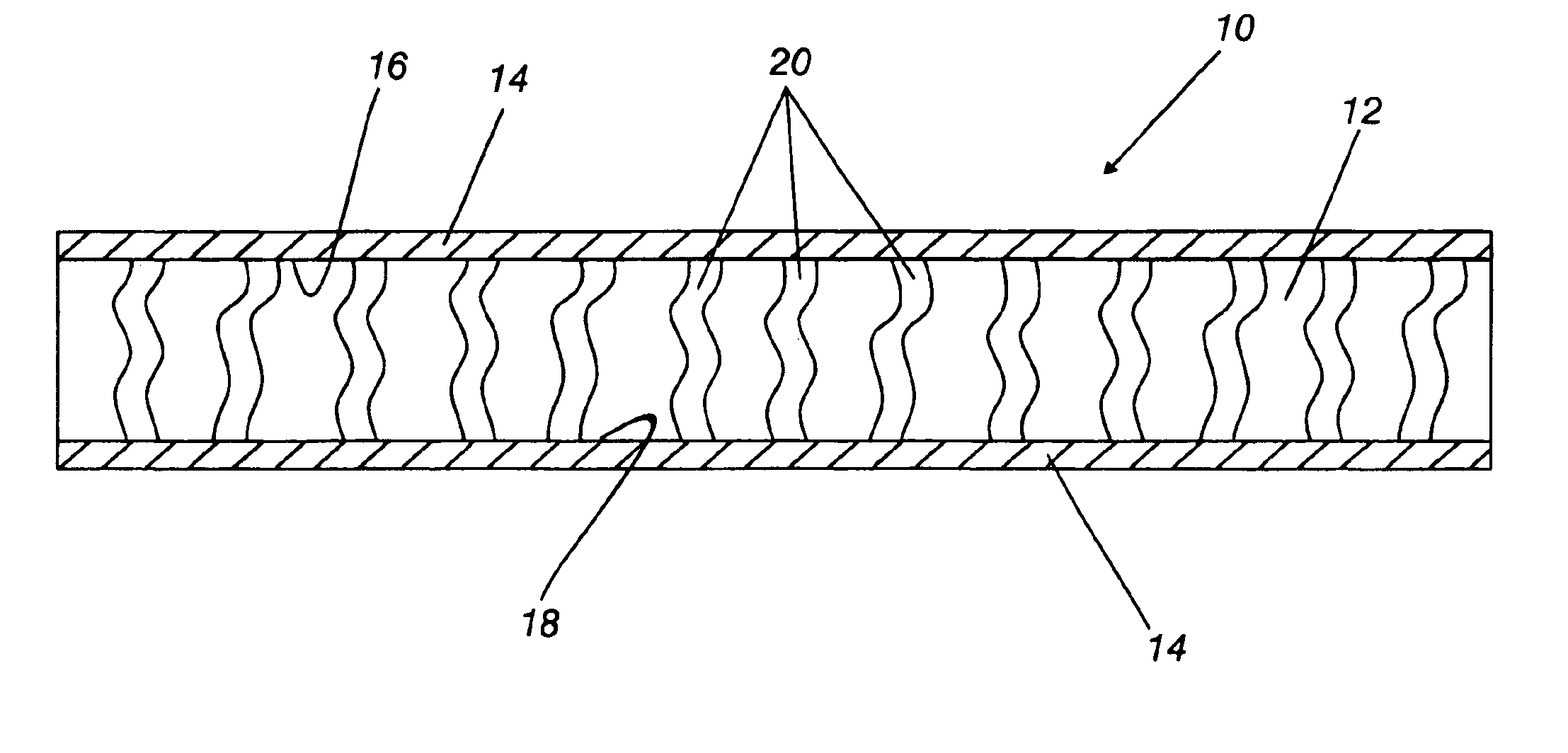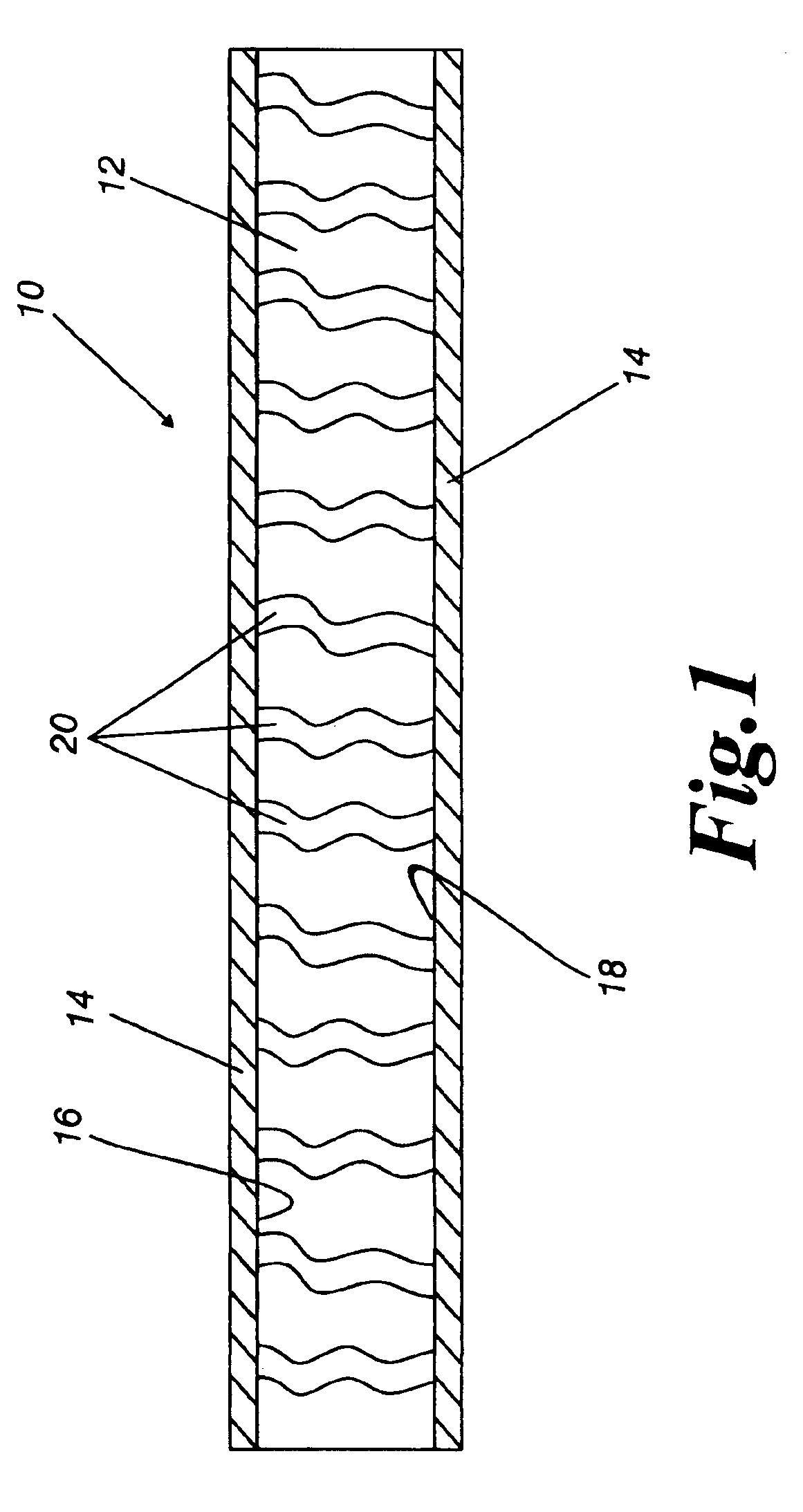Separator for polymer battery
a polymer battery and separator technology, applied in the direction of cell components, cell component details, electrochemical generators, etc., can solve the problems of low mechanical strength, hindered movement, and thin electrolyte, and achieve the effect of improving the conductivity of coated separators
- Summary
- Abstract
- Description
- Claims
- Application Information
AI Technical Summary
Benefits of technology
Problems solved by technology
Method used
Image
Examples
Embodiment Construction
[0015]Referring to the FIGURE wherein like numerals indicate like elements, there are shown, in FIG. 1, a separator 10 for a polymer battery. Separator 10 comprises a microporous membrane 12 and a coating 14. The membrane 12 has a first surface 16, a second surface 18, and a plurality of micropores 20. The coating 14 is disposed on surfaces 16 and 18. Coating 14 covers the membrane 12, but does not fill the plurality of micropores 20. Separator 10, with a thickness less than 38 microns, preferably has a MacMullin Number (see U.S. Pat. No. 4,464,238, incorporated herein by reference) less than 20, and most preferably in the range of 4-12.
[0016]The coating 14 covers the membrane 12, but does not fill the micropores 20. The coating 14 covers the membrane 12, so that later, when the battery is activated by the addition of electrolyte, the pores 20 may be filled with the liquid electrolyte. The conductivity of the separator, in use in the activated cell, is, thus, improved over separator...
PUM
 Login to View More
Login to View More Abstract
Description
Claims
Application Information
 Login to View More
Login to View More - R&D
- Intellectual Property
- Life Sciences
- Materials
- Tech Scout
- Unparalleled Data Quality
- Higher Quality Content
- 60% Fewer Hallucinations
Browse by: Latest US Patents, China's latest patents, Technical Efficacy Thesaurus, Application Domain, Technology Topic, Popular Technical Reports.
© 2025 PatSnap. All rights reserved.Legal|Privacy policy|Modern Slavery Act Transparency Statement|Sitemap|About US| Contact US: help@patsnap.com


